The Canon EOS R100 joins the growing range of mirrorless cameras with an RF mount, and is the fourth to feature an APS-C sensor. It is the least expensive and the simplest of all the EOS R models released so far. In this article, I compare the main differences with the R50, which sits just above it.
Before we begin, here is a list of the things they have in common:
- LP-E17 battery with very similar rating, USB chaging
- 1 SD card slot (UHS-I)
- Electronic-first curtain shutter
- No internal stabilisation (but there is Digital IS for video)
- USB C port, mic input, micro HDMI
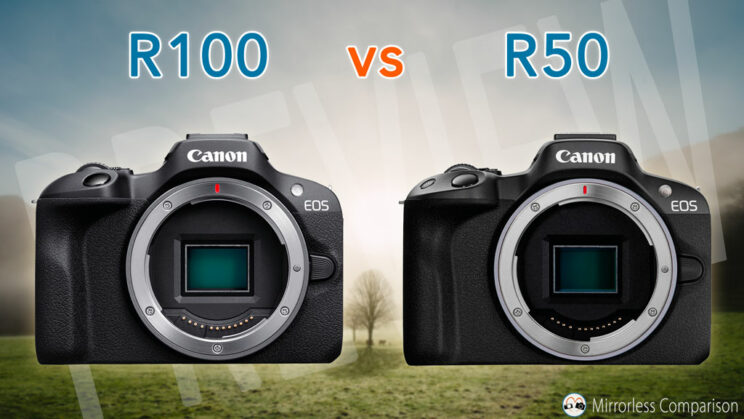
Additional comparison previews:
R100 vs R50
Ethics statement: the following is based on official specs, and our general experience with Canon EOS R cameras. We were not asked to write anything about these products, nor were we provided any compensation of any kind. Within the article, there are affiliate links. If you buy something after clicking one of these links, we will receive a small commission. To know more about our ethics, you can visit our full disclosure page. Thank you!
1. Sensor
A quick read on the Canon website would lead you to believe that these two cameras have the same 24MP APS-C sensor, but this is not the case.
The R100 uses an older sensor, the 24.1MP chip you’ll find in earlier products such as the M50 and M50 II. The image processor is also old, the Digic 8. This means a slower sensor readout and more limitations for video and autofocus, as we’ll discover further down.
The R50 has a 24.2MP sensor that is based on the previous one, but the micro lenses on the surface and the circuitry have been upgraded to improve the performance and image quality. The processor engine is faster and more powerful (Digic X).
Another difference concerns the ISO levels:
Camera
Normal range
Extended range
R100
100 – 12,800
25,600
R50
100 – 32,000
51,200
2. Autofocus
The R100 features an old version of Canon’s Dual Pixel CMOS AF. Don’t get me wrong, it is still a good system with reliable performance for still photography, but it won’t work for 4K video (contrast detection is used instead), and the camera has an older algorithm where only the face and eyes of people are recognised and tracked.
The R50 has the Dual Pixel CMOS AF II version, which works for photo and video (including 4K). Furthermore, the subject tracking capabilities are more advanced, allowing the camera to recognise people, animals and various vehicles.
One thing they have in common is the minimum sensitivity in low light, rated at -4EV, ISO 100, with a f/1.2 lens.
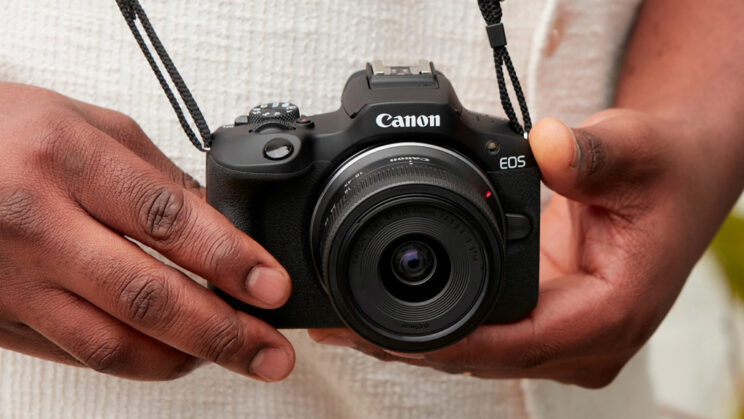
3. Continuous Shooting
The R100 can work up to 3.5 frames per second when using Servo AF (continuous autofocus). The speed increases with the One-Shot AF mode (single autofocus), up to 6.5fps.
The R50 does much better, with 12 fps or even 15fps when using the electronic shutter, no matter whether you use Servo or One-Shot AF.
4. Video
Both cameras can record 4K movies, but with a major difference. The R100 applies a heavy 1.6x crop on the sensor, which significantly reduces the field of view. The camera uses a smaller portion of the frame, which also leads to a potential decrease in video quality.
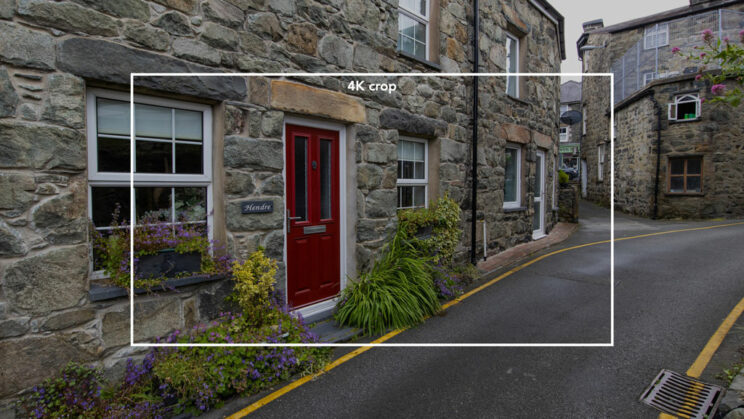
Then we have the angle of view problem. For example, if you set the zoom to 18mm, recording 4K means you get the same field of view of a 29mm lens (18 x 1.6). And we’re talking APS-C here, so the equivalence (in comparison to full frame) means you would get a 46mm equivalent field of view, losing the wide frame the lens can offer in the first place.
Obviously, if you need more reach and don’t have a longer zoom, the 4K crop can be useful, but for many this is considered more of a limitation than a gain.
As already revealed in the autofocus chapter above, recording 4K means accepting a slower and less precise contrast detection autofocus, so tracking subjects could lead to disappointment.
The R50, on the other hand, can record 4K up to 30p using the full width of the sensor, so no crop and no change in your field of view. You can also record better quality in 10-bit 4:2:2 internally with the HDR PQ profile, an option you won’t find on the R100.
In Full HD, they both reach 60p without a sensor crop, but only the R50 has the 120p option via the High Frame Rate mode. On the R100, this option is available with a lower resolution (720p).
5. LCD Monitor
This is for me the most disappointing downgrade on the R100: the rear monitor is fixed, has less resolution (1.04M dots) and, surprisingly for such an entry level model, doesn’t have touch capabilities. It’s basically your average fixed LCD found on entry level cameras 10 years ago.
If this is a deal breaker for you, then you’ll have to settle for the R50, which has a multi-angle touch sensitive screen with 1.62M dots.
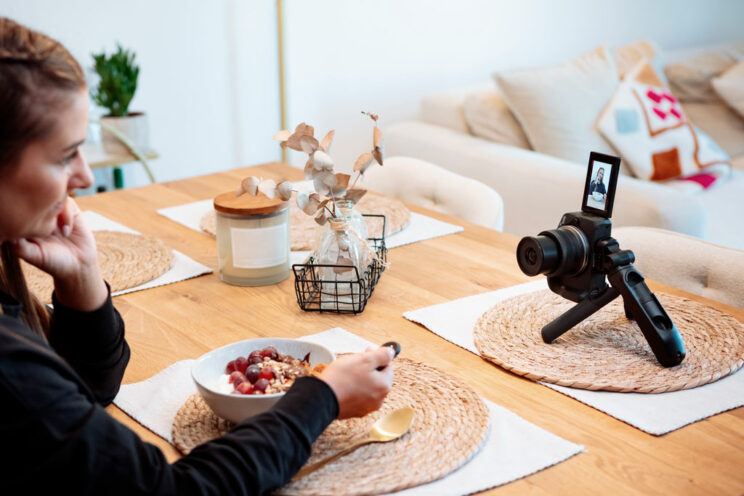
6. Viewfinder
For the most part, the viewfinder is the same: a 0.39-in OLED panel with 2.36M dots, 0.59x magnification and a 22mm eyepoint. It’s pretty average and low-end by today standards, but not surprising given the consumer target of these two cameras.
One advantage found on the R50 is the refresh rate, which goes up to 120fps with the Smooth setting, whereas that of the R100 tops out at 60fps.
7. Controls
The design and dimensions of the two cameras are very similar, with the R100 being a bit lighter by comparison.
- R100: 116.3 x 88.1 x 58.7 mm, 356g
- R50: 116.3 x 85.5 x 68.8 mm, 375g
The button layout is almost the same, but the R100 lacks one extra thing: the ISO button you find on top of the R50, which can be customised.
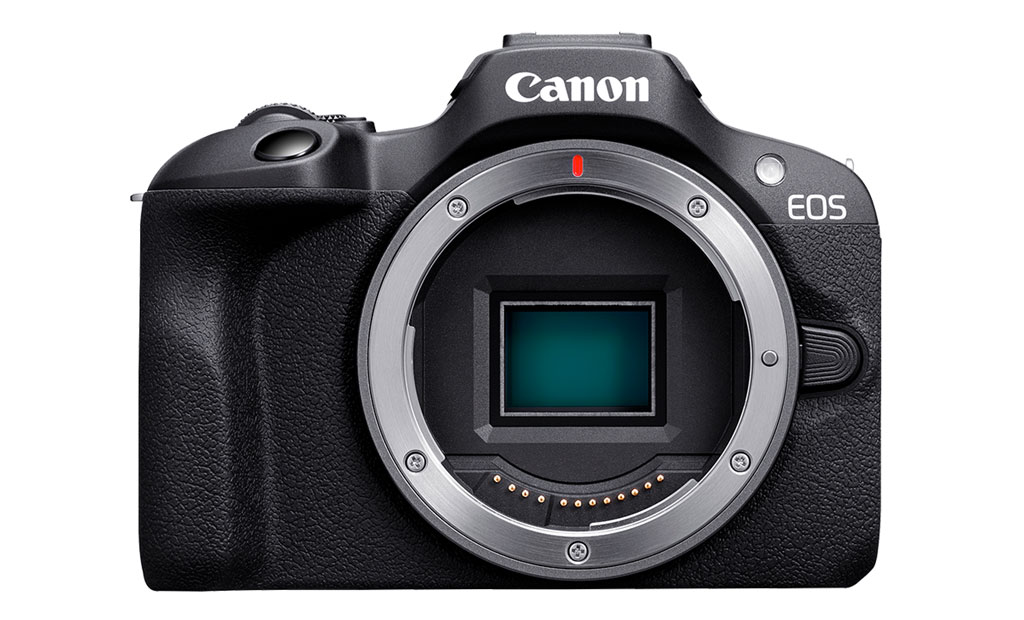
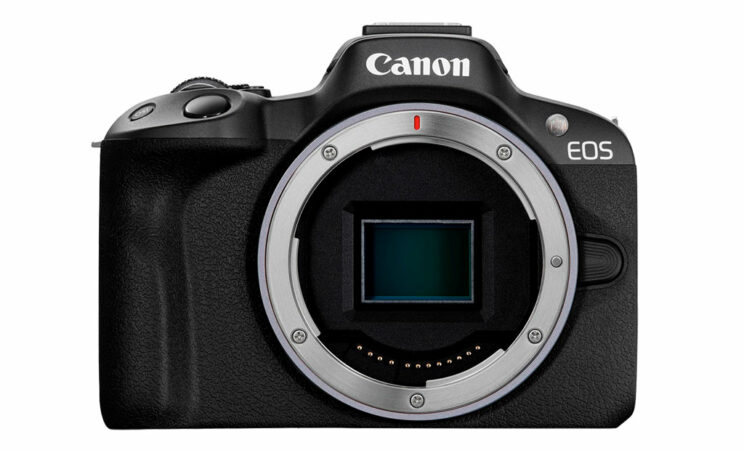
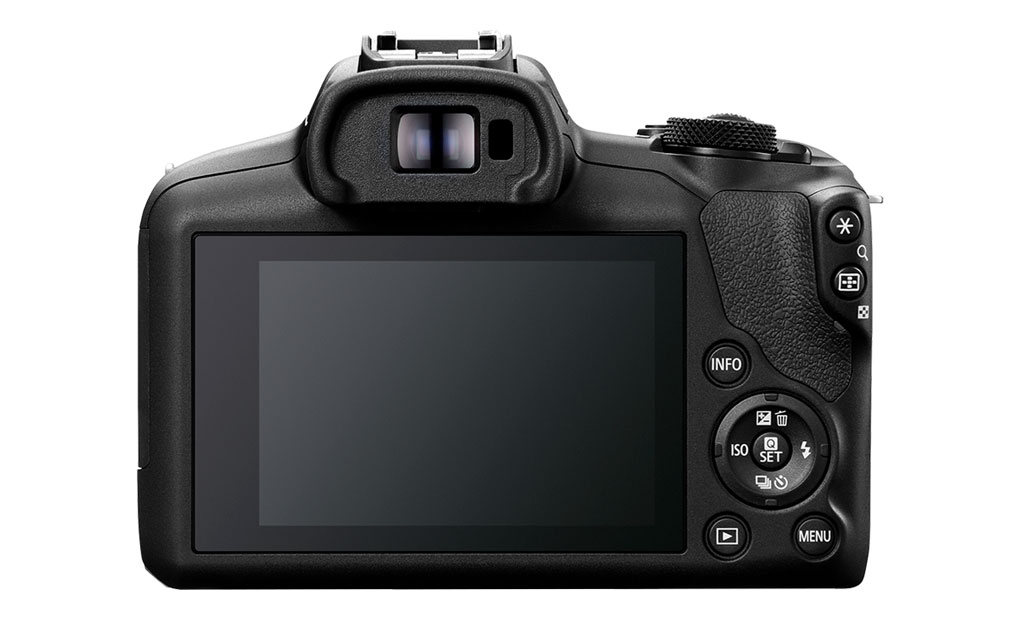
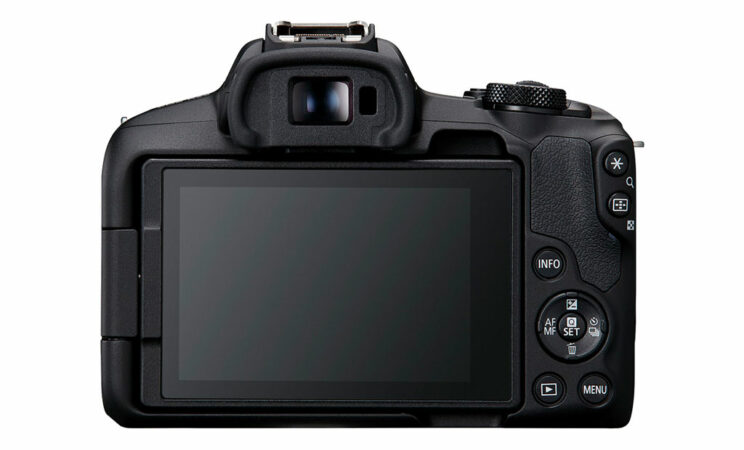

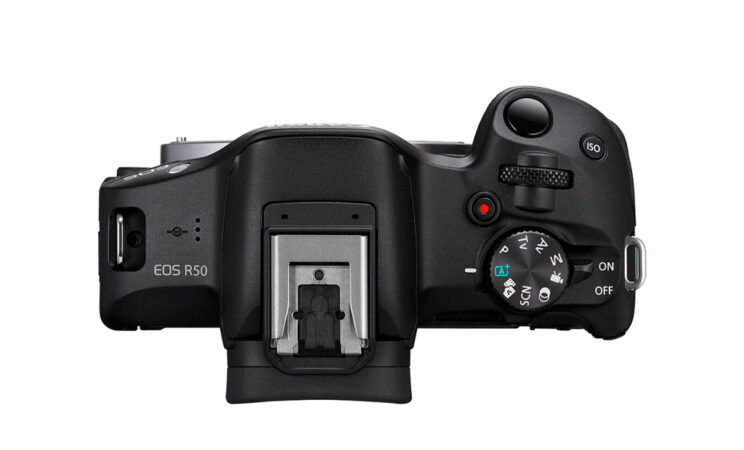
8. Hot-shoe
The R100 has a standard hot-shoe that can be used with Canon, as well as third party speedlight units. Nothing surprising here.
The R50 gets the recent Multi-Function shoe which is compatible with digital audio and dedicated Canon microphones, as well as the most recent flash units.
However, and this is an important point, this particular version of the multi-function shoe on the R50 lacks the central pins (also referred to as legacy pins). This means you’ll need the AD-E1 adapter to work with older Canon and 3rd party flashes.
9. Mount adapter
I was strugling to find the ninth difference until I stumbled upon DPreview’s news article. According to what Canon told the journalist, the R100 will work with all the RF to EOS R adapters, but is not compatible with the control ring found on some of these adapters.
It’s a small thing, I know, but still worth sharing.
10. Price
There is a reason the R100 feels like a cheaper low-end version of the R50, and that’s because it is less expensive. Prices with the RF-S 18-45mm kit lens are $600 / £670 / €700.
The R50 is more expensive with the same lens, starting at $800 / £900 / €930.
Additional comparison previews:
R100 vs R50
First thoughts
The R100 takes the place of the R50 as the entry level model in the Canon EOS R APS-C series. The brand obviously tried to keep the price as low as possible by using leftover tech in its factories: an older sensor with less dynamic range, crippled 4K video, a previous generation AF system.
On one hand, I can see the sense with this move but personally, I find it a shame they sacrificed the monitor that much: no articulation and no touch screen make it feel like a very old camera, and the absence of touch capabilities is even more surprising for a product that is supposed to encourage smartphone users to get a “real” camera.
I understand that the budget can be very limiting for some, and if you really want a Canon RF camera, then the R100 is your best option. However, look elsewhere at other brands, and you can quickly find second-hand products for a similar price, but with better image quality, less compromises for video, as well as more controls.
It goes without saying that if you do have room for the extra $200, the R50 is a much better proposition.
Reminder: the links below are affiliate links. If you decided to buy something after clicking the link, we will receive a small commission.
Check the price of the Canon R100 on
B&H Photo
Check price of the Canon R50 on
Amazon | Amazon UK | B&H Photo | eBay
